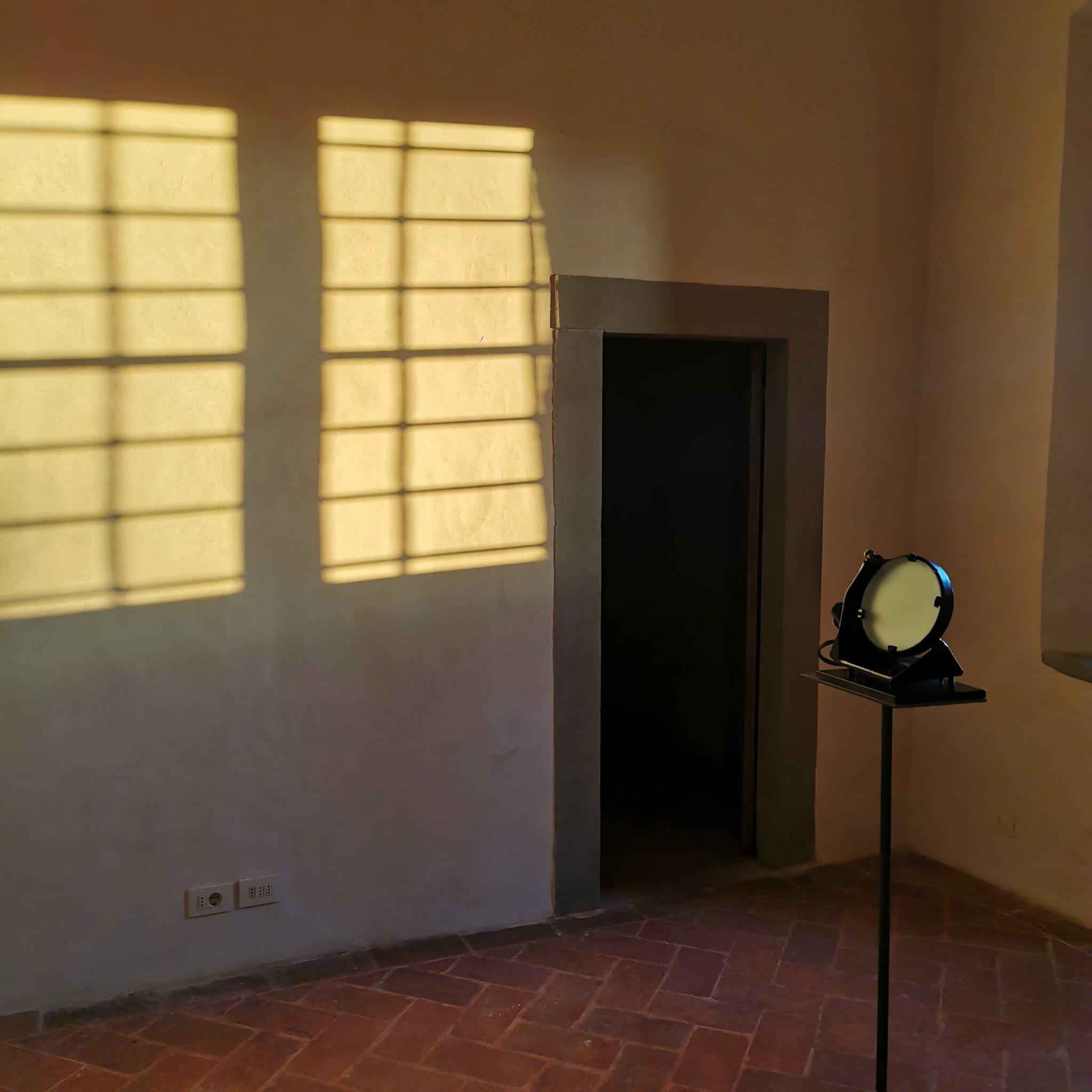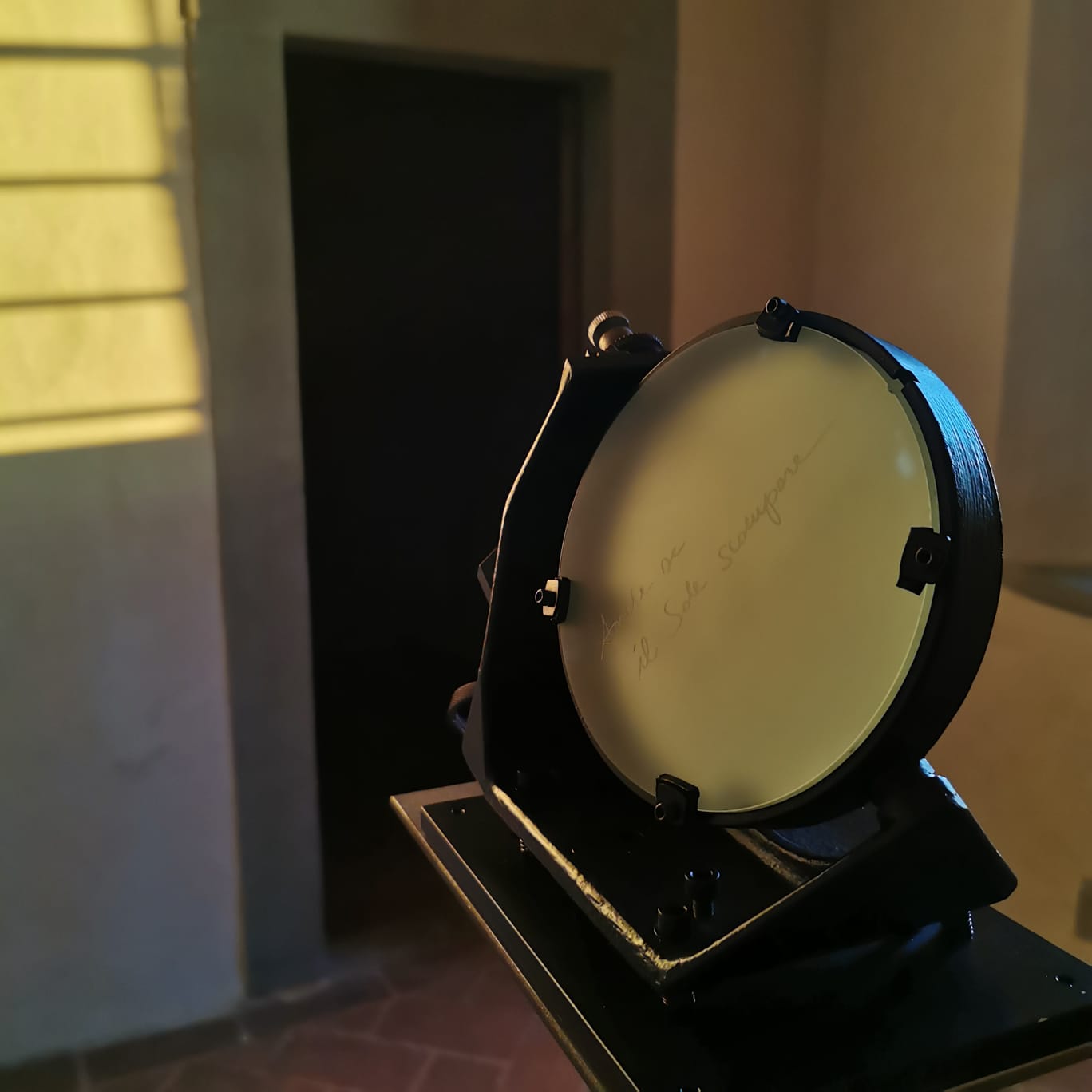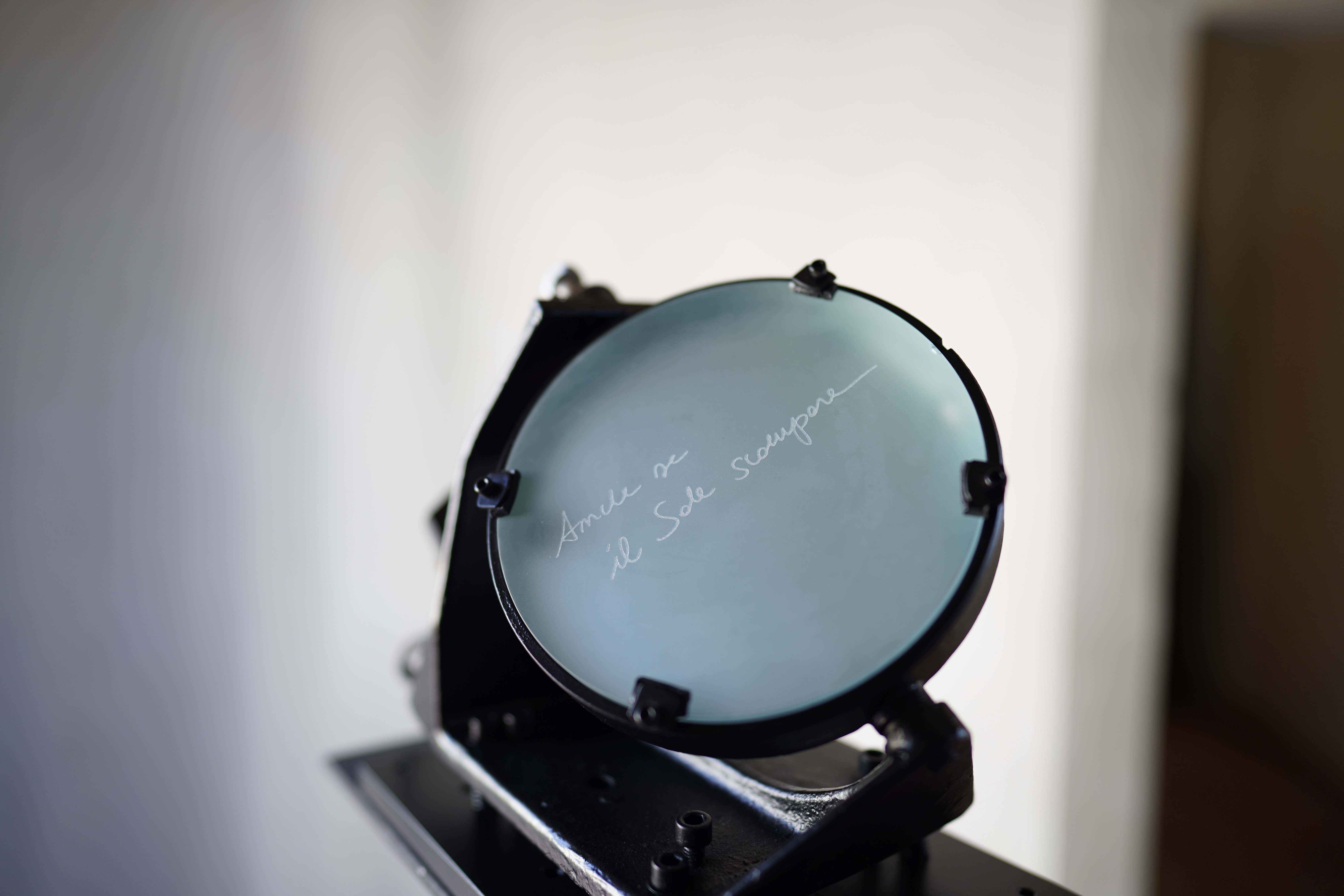Villa Galileo Firenze
Piedistallo ferro, Celostato nero, incisione su vetro, affaccio con luce solare
ph@JacopoNocentini
“Anche se il Sole scompare” è un lavoro che si misura con l'impossibilità di trattenere per sempre qualcosa, qualcosa che c'è e poi scompare alla vista ma continua ad esistere altrove. Il lavoro che nasce dallo scambio dell’artista con i fisici teorici della materia oscura, avvenuto in occasione della residenza che Di Carlo ha fatto questo aprile 2023 dentro l'ultima dimora di Galileo Galilei a Firenze.
Di Carlo recupera un vecchio Celostato* dai laboratori del GGI, per trasformarlo in un dispositivo nostalgico di mancate visioni, e/o visioni passeggere. Posto su un piedistallo in ferro lo specchio astronomico del celostato riporta incisa sul lato satinato la frase: ”anche se il sole scompare”. Il lato specchiante invece, cerca di incontrare anche un solo raggio di luce presente nella sala espositiva per riflettere un piccolo cerchio luminoso, quasi un sole o un corpo celeste che in pochi minuti svanirà assieme al movimento terrestre.
L’opera racconta il nostro essere infiniti e finiti al tempo stesso, le nostre fragilità che si formano attraverso la gravità ma soprattutto attraverso il dolore. Tutto si muove in una tensione verso l’esistenza, in costante caduta libera verso quello che non conosciamo. Ed il nero di questo oggetto senza più luce, fa da memento alla necessità di attraversare l’oscurità per trovare la luce di un sole dall’altra parte.
*Il Celostato è uno strumento che serve per riflettere un fascio di raggi proveniente da un oggetto celeste per poter studiare quel determinato oggetto. Poiché il corpo celeste si muove nell’universo e anche l’asse terrestre si muove, il celostato ha un motore che fa ruotare i suoi specchi che inseguendo i raggi di luce li proiettano sempre nella stessa direzione a prescindere dal moto della volta celeste causato della rotazione terrestre. Le immagini che vengono prodotte da questa riflessione sono proiettate su di una superficie in modo da poter osservate dagli scienziati.
"Even if the Sun Disappears" is a work that measures the impossibility of holding something forever, something that is there and then disappears from view but continues to exist elsewhere. The work that stems from the artist's exchange with dark matter theoretical physicists that took place during Di Carlo's residency this April 2023 inside Galileo Galilei's last home in Florence.Di Carlo retrieves an old Celostat* from the GGI laboratories, to transform it into a nostalgic device of missed visions, and/or passing visions. Placed on an iron pedestal, the celostat's astronomical mirror bears engraved on the frosted side the phrase, "even if the sun disappears." The mirrored side, on the other hand, tries to meet even a single ray of light present in the exhibition hall to reflect a small circle of light, almost a sun or a celestial body that in a few minutes will vanish along with the earth's movement.
The work tells of our being infinite and finite at the same time, our frailties formed through gravity but especially through pain. Everything moves in a tension toward existence, in constant free fall toward what we do not know. And the blackness of this object with no more light, serves as a memento of the need to cross the darkness to find the light of a sun on the other side.
*The celostat is an instrument used to reflect a beam of rays from a celestial object in order to study that particular object. Since the celestial body moves in the universe and the earth's axis also moves, the celostat has a motor that rotates its mirrors, which chase the rays of light and always project them in the same direction regardless of the motion of the celestial vault caused by the earth's rotation. The images that are produced by this reflection are projected onto a surface so that they can be observed by scientists.



